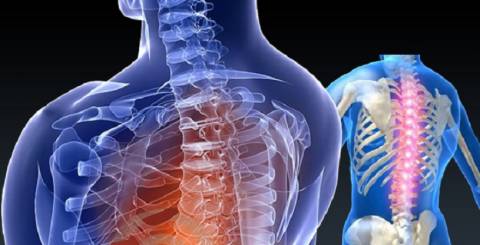Spine Surgery: Types, Recovery, Risks and Benefits

Overview
The spine and spinal cord together form one of the most vital neurological structures. A spine can go through a fracture, suffer an infection, can bend unusually or can suffer from a tumor or undergo bone changes that come with aging. A damaged spine can badly interfere with the harmonious functioning of our body, causing a lot of unwelcome problems like severe pain, numbness and weakness in the arms and legs, difficulty in breathing, digestion issues, and impairment of the bladder and bowel control.
Most of us have experienced at least one episode of back pain; spinal pain to be more specific. Generally, the spine problems are cured using the conventional treatment techniques such as pain relief medicines, physiotherapy, Epidural injections, etc. But for patients, who do not gain any relief from these, are suggested spine surgeries.
Types
There are quite a few spine treatment techniques available today; the most common spine surgery procedures are:
• Artificial Spine Lumbar Disc Replacement
• Minimally Invasive Spine Surgery
• Spine Osteotomy
• Spinal Instrumentation
• Cervical Spine Surgery
• Spinal Fusion
• Spine Decompression Surgery
• Foraminotomy
• Lumbar Laminectomy for Spine or Spine Decompression
• Spine Tumor Surgery
Whether it is an Open surgery or a Minimally Invasive Spine procedure, there are three surgical approaches to perform such surgeries:
• Anterior approach
• Posterior approach
• Lateral approach
Recovery
In order to bring out the best surgical results, following the surgeon’s instructions plays a very significant role. Each kind of spine surgery has its own duration of recovery, depending on the patient’s age, health condition, the severity of the spinal ailment that was cured, whether the procedure was invasive or non-invasive in nature and definitely the competency of the surgical hands. For example, the recovery period for the Spinal Fusion procedure is of about 3-4 months for the fusion to heal completely.
The patients need to avoid giving any sudden jerk to the spine, bending, lifting heavy things, indulging in any kind of sports activity. Even the best Spine and Orthopaedic surgeons strongly recommend that keeping in mind the vitality of organ, ample amount of rest should be taken.
Risks
With the Spine and Neurosurgical treatment technology improving in leaps and bounds with each passing year, so does the chances of risks and complications is going down. But despite of being rare, there can be some risk factors that come along with spinal procedures and these risks differ for every spine surgery:
• Complications associated with anesthesia
• Infection at the surgical site
• Failure to provide any relief from the pain
• In case of Spinal Fusion, the vertebrae might not fuse together properly
• Nerve damage
• In cases, where screws or other implants have been used, they might break or loosen due to which the patient may need a revision procedure
• Blood clots in the legs or lungs
• Heart attack or stroke
• Disc Herniation
• In extremely rare cases, paralysis
Thankfully, these complications are extremely rare and even if they occur, there are treatment methods with which the best Spine and Orthopaedic surgeons can address them.
Benefits
Considering the difficult kinds of symptoms that spinal ailments bring along, the benefits are surely worth going through the surgeries. Every spine surgery has its own share of benefits and can vary from patient to patient. But overall, the advantages of spine procedures are:
• Long –lasting respite from the severe pain
• Patient’s range of motion is improved
• The patient does not have to restrict himself or herself from doing the activities of his or her choice
• The improvement in the quality of life gives a positive thrust to the patient’s confidence
• Many surgeries being minimally invasive, the recovery is faster and the pain and bleeding involved in much lower
• Very tiny incision so hardly any chances of infection
Conclusion
Much credit goes to the worldwide Spine specialists and medical researchers, who are assertively pushing themselves to find out newer methods so that the number of patients suffering from spinal disorders can be curbed. Thanks to the advent of highly progressive surgical options, the patients can get cured of the most severe type of spinal disorders. Thus, it is suggested that patients should never ignore if they face any kind of pain or discomfort around the spinal region. The delay and ignorance can not only make them suffer in the long run but can lead to the occurrence of more catastrophic outcomes.
Similar Articles
Knee pain affects millions of people around the world. It can make daily activities difficult and impact your quality of life. Knee discomfort can be caused by injuries, chronic conditions, or overuse.
If your knees have recently started sounding like a bowl of Rice Krispies (snap, crackle, pop!) every time you stand up, congratulations — you're officially living the adult experience.
Search engine optimization (SEO) may help physical therapists improve their online exposure and drive more visitors to their website.
You're sitting at home with two completely different treatment plans from two doctors you trust.
When conservative therapy fails, surgery may be required to alleviate chronic foot or ankle discomfort.
Your body changes with time - muscles and bones shift, ligaments loosen, and circulation may slow. Unfortunately, the aging process has an impact on our feet as well.
Back problems aren't just discomfort or temporary back pain. Many of them can be extremely dangerous and lead to serious complications if you don't seek medical attention on time.
Sciatica is a condition in which the sciatic nerve, the longest nerve in the human body, becomes irritated or pinched
Irritable bowel syndrome (IBS) is a dysfunction of the gastrointestinal tract that manifests as abdominal pain, bloating, flatulence, and intestinal discomfort (constipation, diarrhea, or a combination of both.









